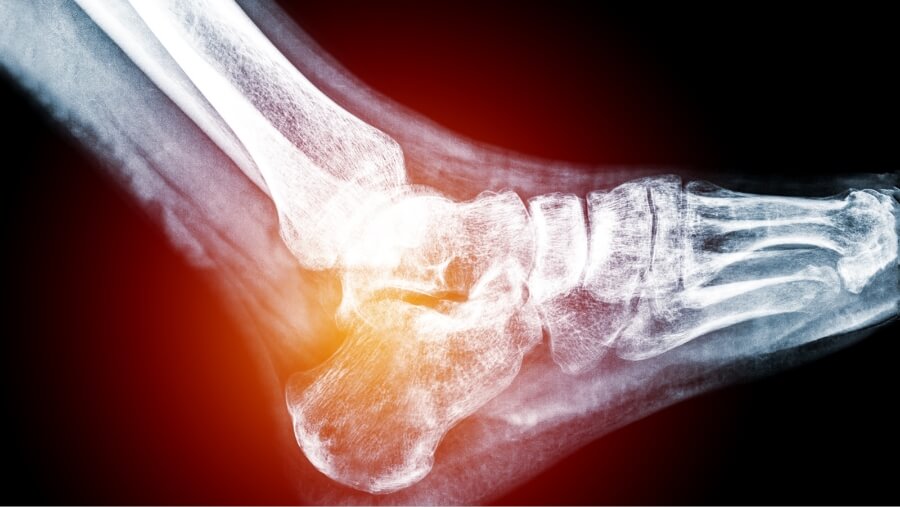
Gout in Heel Illustration
Sudden pain in an area of your foot might make you wonder about what could have cause it. Numerous causes of foot pain exist. One potential cause of such pain is gout in heel, a medical condition which most commonly affects the big toe and the heel.
What is gout and what causes gout in heel?
Gout is a common, painful form of inflammatory arthritis, that causes sudden, severe joint pain. It results from higher-than-normal uric acid levels in the body.
Normally, uric acid is a substance that dissolves in the blood. Your body produces uric acid when it breaks down certain chemicals named purines, which are found naturally in various foods and drinks.
Uric acid passes through the kidneys and then exit the body with urine. But sometimes uric acid can build up and form urate crystals. When these crystals form and accumulate in the joints, they cause pain and swelling.
Pain in heel and Achilles tendon: is it gout or something else?
The heel of the foot consists of the calcaneus (largest bone of the foot), cushioned below by a fluid-filled (bursal) sac, fat pad, and thickened skin.
The possible triggers of heel pain are numerous, but a mechanical cause is the most common. Potential causes of heel pain range from localized injuries to consequences of systemic disease.
The most common diagnosis of heel pain is a condition called plantar fasciitis, which leads to heel pain, especially with the first weight-bearing steps after rest.
Pseudogout is another possible cause, but differs from gout as it is caused by the accumulation of calcium crystals, and not urate crystals.
Most commonly, gout attacks your big toe at first, in which case it is known as podagra. But gout can also attack heels, ankles (where the Achilles tendon is located), knees, wrists, fingers, and elbows, resulting in pain in these regions. These attacks may be isolated or, in some rarer cases, affect two or more joints simultaneously.
Gout in heel represents the formation of urate crystals in the heel, bringing about a painful heel.
Persistently-high levels of uric acid could cause dysfunction of blood vessels. This dysfunction may, in turn, increase the risk of tendinopathy, with the Achilles tendon and patella tendon most frequently affected by this condition.
Who is most at risk for gout in heel?
There are a number of risk factors, associated with higher odds of suffering from gout in heel.
You stand at a higher risk of getting gout in heel if you:
- Are a man
- Have family member with gout
- Have higher weight
- Drink alcohol, especially beer
- Eat too many foods rich in purines, such as red meat, shellfish and sugary foods
- Use certain medications, such as thiazide diuretics
- Have untreated medical conditions, such as high blood pressure, diabetes, metabolic syndrome and kidney disease.
Early stages: signs and symptoms of gout in heel
Gout presents from its early stages with so-called gout attacks, which are characterized by the following changes in the affected region (most commonly the big toe and heel):
- Pain
- Swelling
- Redness
- Tenderness
- Increased warmth
- Increased difficulty to move the joint
- Increased intensity during long periods of rest
What does gout in heel feel like?
The pain of an attack is described to be similar to that of a dislocation, but the affected parts feel as if cold water were poured over them. Afterwards chills, shivers and a mild fever follow. The pain which begins as moderate in intensity becomes more severe and is accompanied by tightening, pressure and heat.
Heel pain which originates from gout differs from pain caused by plantar fasciitis as the latter improves with rest and is most noticeable in the early morning.
The symptoms and signs of gout should be treated and managed accordingly. The treatment of symptoms and signs of gout is combined with remedies, which treat the underlying cause of the disease (see “Treatment and prevention of gout” section below).
How long does gout last?
An acute gout attack will generally reach its peak 12-24 hours after its onset, and then will slowly begin to resolve. At first, an attack of gout usually lasts 5 to 7 days. Eventually, attacks last longer and happen more often.
Some patients only experience acute gout attacks which may be limited to 1-2 attacks per year (or even 1-2 in their entire lifetime).
However, for some patients, gout can be a relapsing problem with multiple severe attacks that occur at short intervals and without complete resolution of inflammation between attacks.
This particular form of gout is called chronic gout, and may be accompanied by small lumps under the skin of the affected region, known as tophi.
Early detection of gout in heel
The detection and diagnosis of gout is based on the symptoms and signs of gout, as well as on helpful diagnostic tests. These tests include the following:
- Joint fluid test: A needle is used by your doctor to take out fluid from your joint, such as that of the heel. This fluid is examined under a microscope, with the purpose of detecting visible urate crystals.
- Blood test: A blood test measures the levels of uric acid in your blood, but it is not definitive. Some people have high uric acid, but never experience gout, whereas other people have signs of gout, but don’t have elevated levels of uric acid in their blood.
- X-ray imaging of the joint: This imaging technique serves to rule out other possible causes of joint inflammation.
- Ultrasound imaging: Ultrasound is also a very helpful imaging method, which is used to visualize urate crystals in the joint.
- Dual-energy CT-scan (DECT): This test represents a combination of many X-ray images taken from different angles to visualize urate crystals in the joint.
Imaging methods in gout forms that have not received adequate treatment may show abnormal changes, such as cartilage loss in joints, punched-out bone erosions, overhanging and hardened bone edges, and bony outgrowths on tendons and ligaments attachments in the calcaneus, the bone of the heel.
Treatment and prevention of gout in heel
There is, unfortunately, no cure for gout. Nevertheless, viable treatment options do exist, and they intend to limit attacks and control painful symptoms.
An acute gout attack may be treated with:
- Topical medications, such as Dr. Elix’s Gout Pain Relief & Crystals Removal Topical Treatment.
- NSAIDs (non-steroid anti-inflammatory drugs), such as ibuprofen
- Corticosteroids such as prednisone
- Colchicine
To reduce the likelihood of recurrent flares, patients are strongly encouraged to make changes to their lifestyle and opt for an appropriate gout diet. Patients with gout should:
- Drink plenty of water
- Exercise and maintain a healthy body weight
- Control daily stress levels
- Limit consumption of certain foods that are rich in purines (e.g., organ meats, shellfish)
- Avoid alcoholic drinks (especially beer)
- Avoid drinks with high-fructose (e.g., corn syrup)
- Include more vegetables and low-fat or nonfat dairy products in their diet
- Add more Vitamin C, preferably in the natural form, like whole fruits.
- Avoid certain medications, as advised by your doctor.
How to prevent potential gout complications?
If left untreated, gout might progress in its course and present with debilitating complications, which might seriously worsen the quality of life.
These complications include extensive joint damage from an increased frequency of attacks, formation of tophi , osteoarthritis, formation of kidney stones and development of chronic kidney disease.
In order to keep away from the potential complications of gout, your doctor might recommend gout-specific medications, which work in two different ways:
- By blocking uric acid production (xanthine oxidase inhibitors e.g., febuxostat and allopurinol)
- By promoting uric acid removal (uricosurics, including lesinurad and probenecid).
A better preventive options for gout in heel, to control gout in general, and for your whole health, is to opt for effective gout home remedies like drinking enough water and keeping yourself hydrated, eating cherries or drinking tart cherry juice as well as low fat milk along with ginger tea and other potent natural remedies.
In fact, many of them are, actually, backed-research and proven effective in lowering the body uric acid levels.
At the level of the affected joints Dr.Elix’s Gout Pain Relief & Crystals Removal Fast-Acting Topical Treatment is our recommended remedy, for fast gout pain relief, and to break and dissolve joint deposited uric acid crystals. These therapeutic effects will allow to treat efficiently gout attacks and control their frequency and intensity.
What is Dr. Elix Gout Pain Relief Treatment?
Dr. Elix’s gout remedy is a topical medication, proved to be effective for the treatment of gout attacks and chronic gout. This medication provides:
- Fast and long-lasting gout pain relief
- Removal of joint-deposited uric acid crystals
- Healing of injured tissues.
Through these effects, Dr. Elix’s medication improves significantly gout patients life quality and protects them from further complications.
How does it work?
Dr. Elix’s gout pain relief topical treatment is available in two complementary versions.
The first version is dedicated to relieve gout pain fast, remove uric acid crystals from joints, and to heal the injured smooth tissues, whereas the second version is dedicated to osteoarthritis, joint damage, and pseudogout.
It works by simply applying few drops or squeezes on the affected area and by massaging (gently) for 2 to 3 minutes until properly absorbed by the skin.
Dr. Elix’s medication is 100% natural. It purely consists of natural plant extracts, essential oils and carrier oils.
Takeaways
Gout is a type of arthritis, which causes a painful heel and Achilles tendon. It is associated with high levels of uric acid in the body. Some people are more at risk of developing gout than others.
The early stage of gout in heel is characterized by gout attacks. It may last longer and progress to its chronic form, if left untreated.
Gout in heel is detected based on signs, symptoms and diagnostic tests.
Gout in heel must be distinguished from plantar fasciitis, as the most common cause of heel pain.
To treat gout in heel consider Dr. Elix’s gout pain relief topical treatment as it is proven to be very effective. In addition, opt for appropriate lifestyle and diet changes, plus selected gout home remedies.

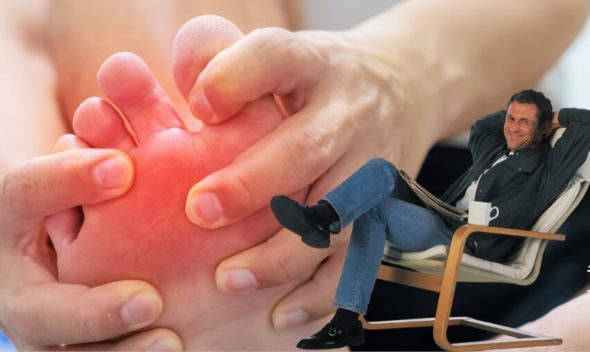

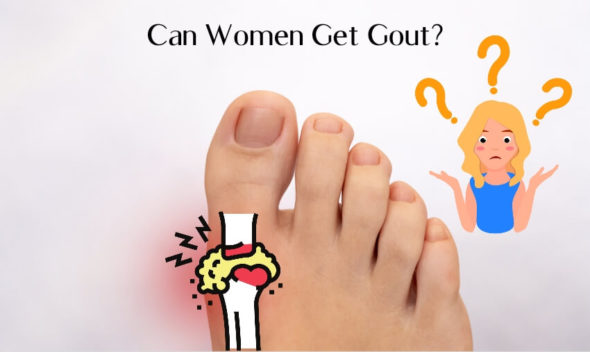


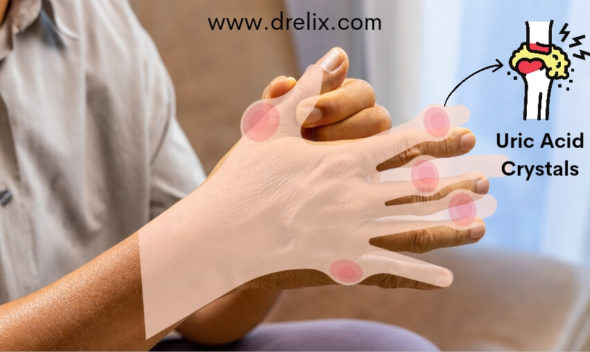
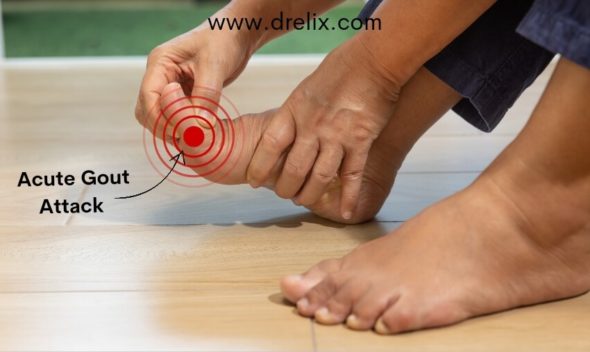
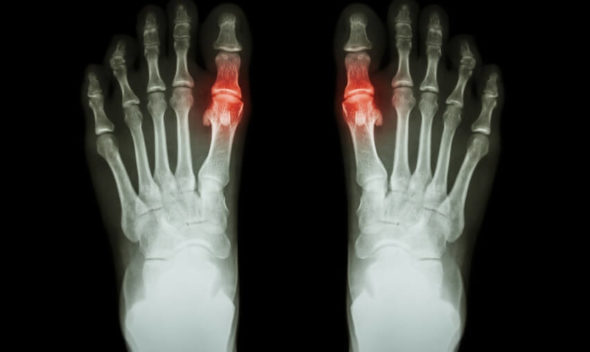




Leave a comment